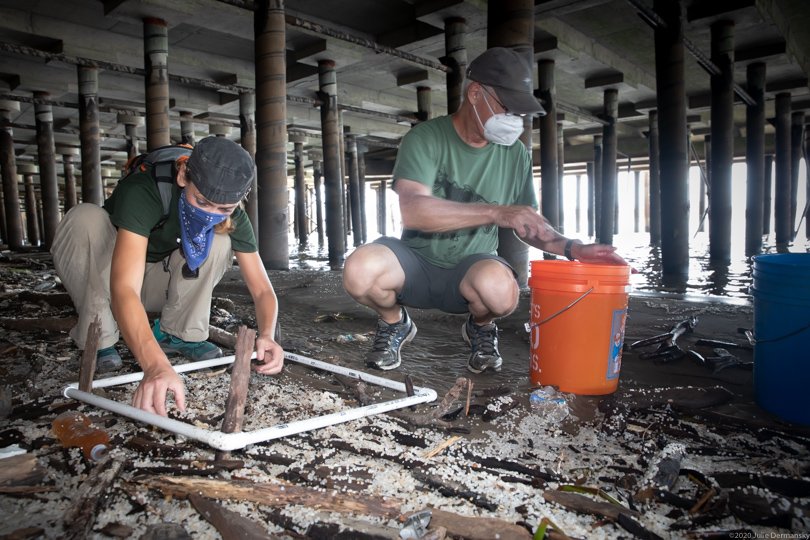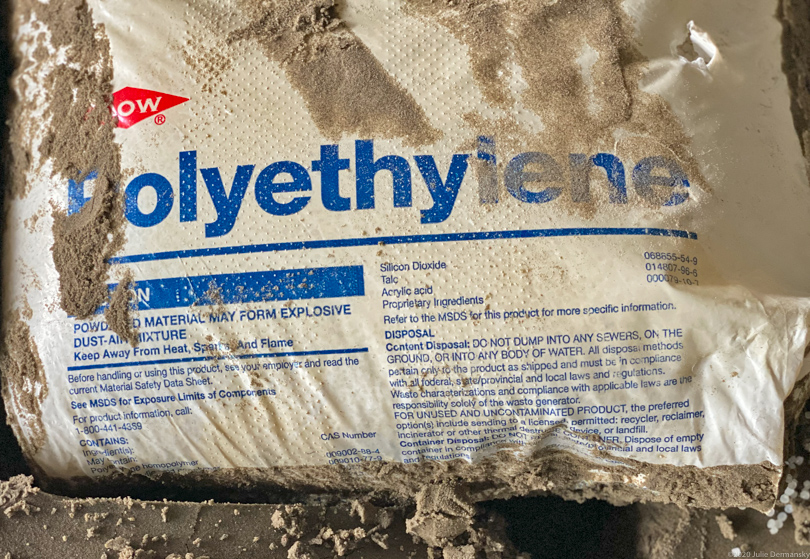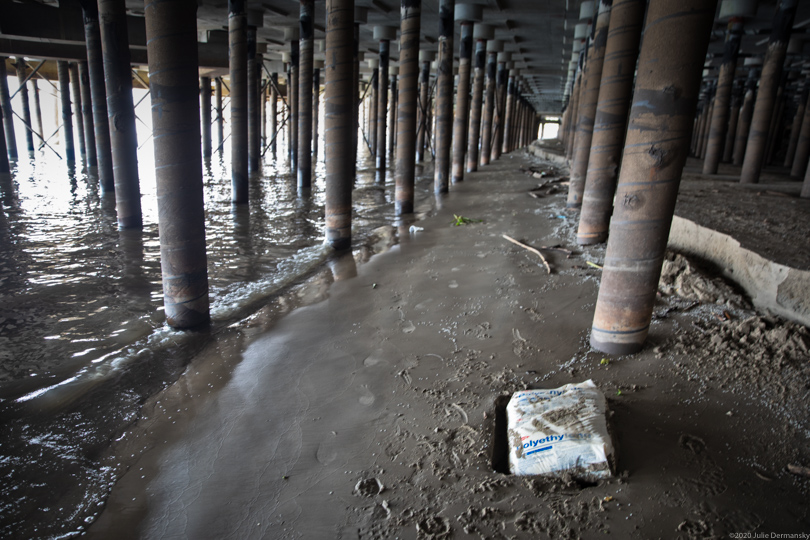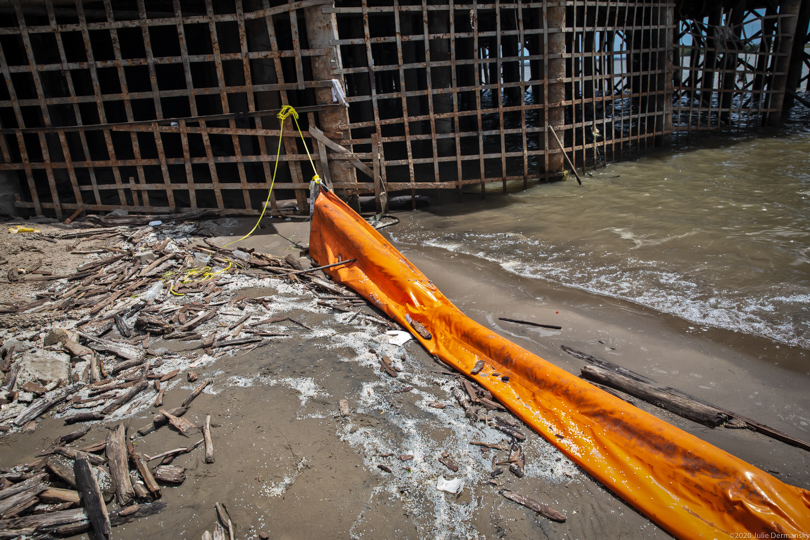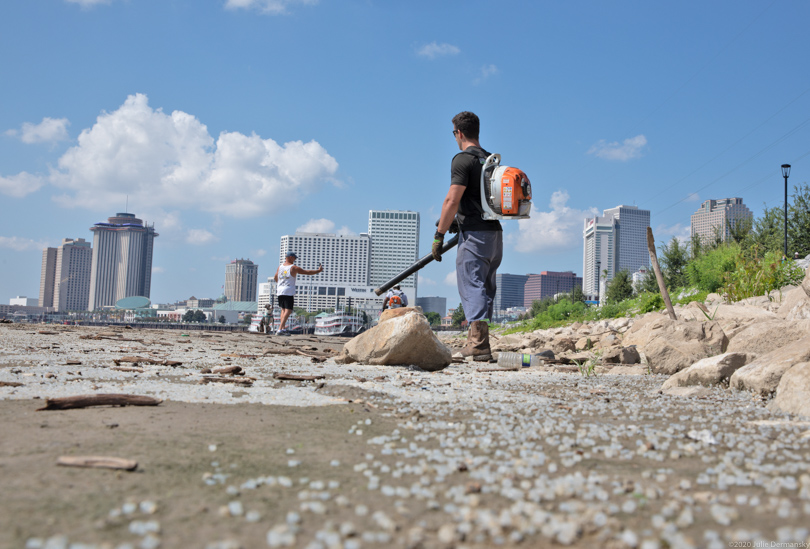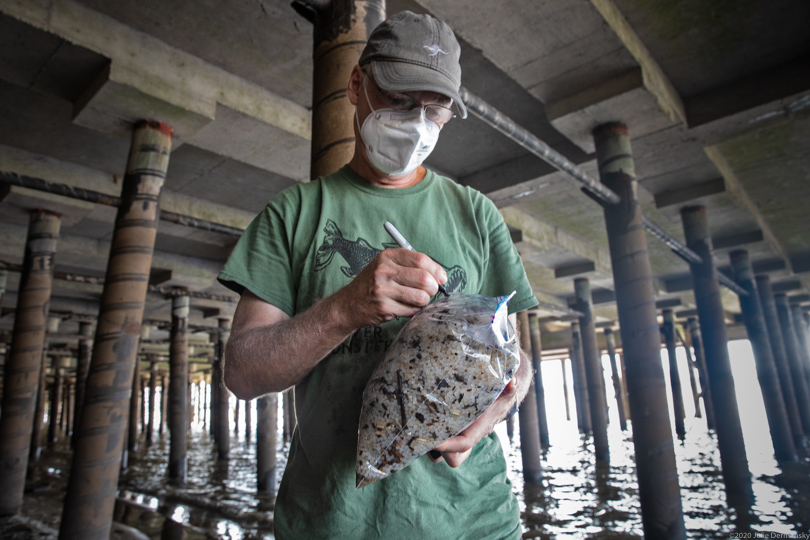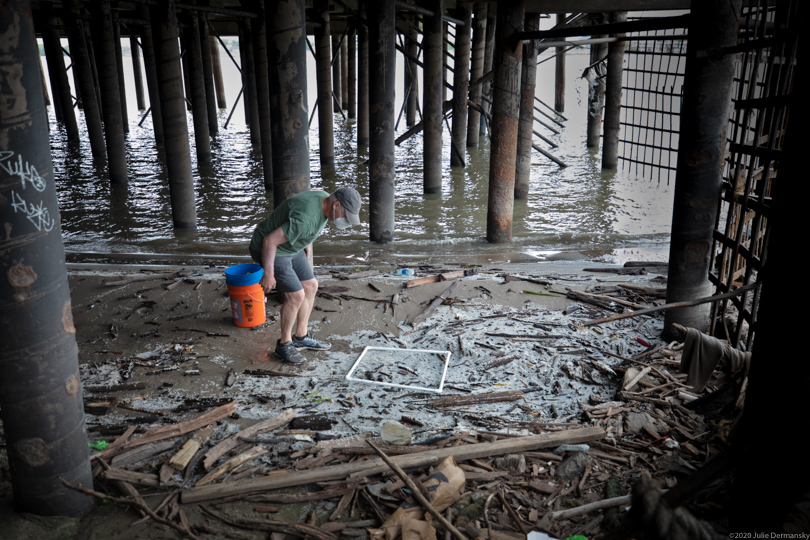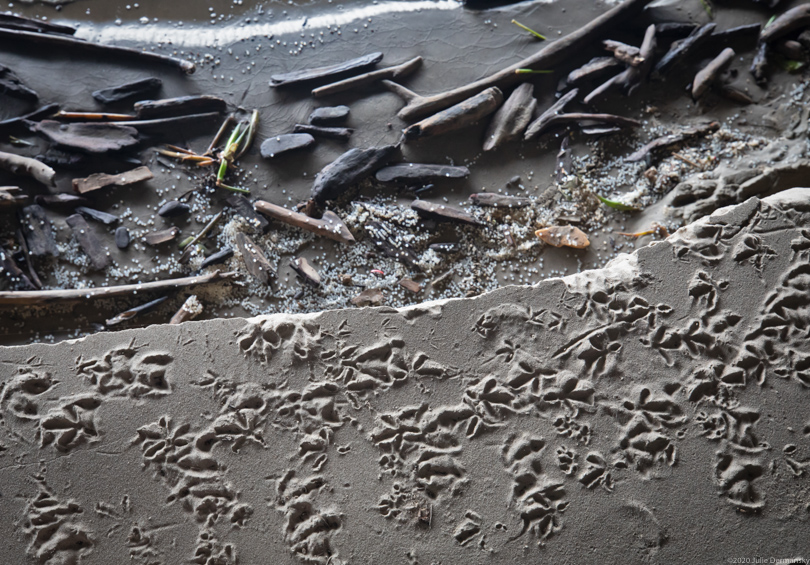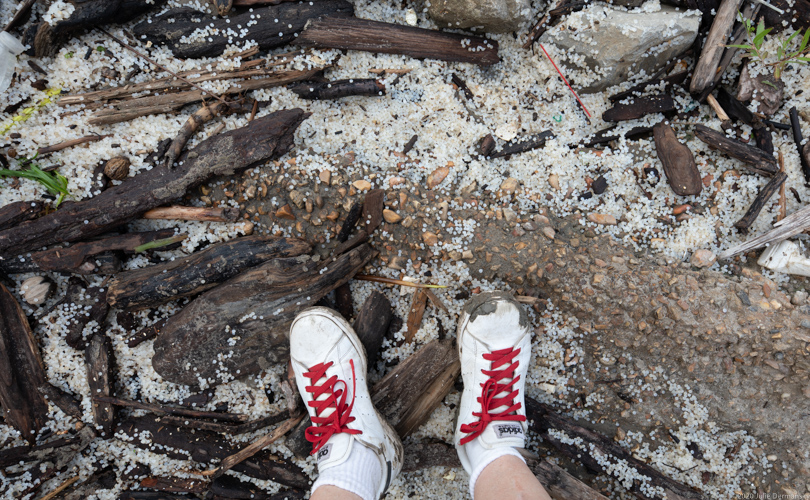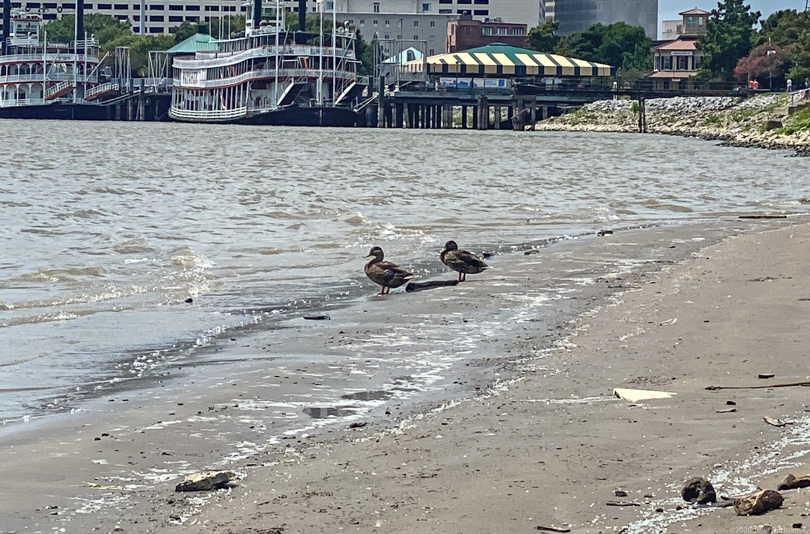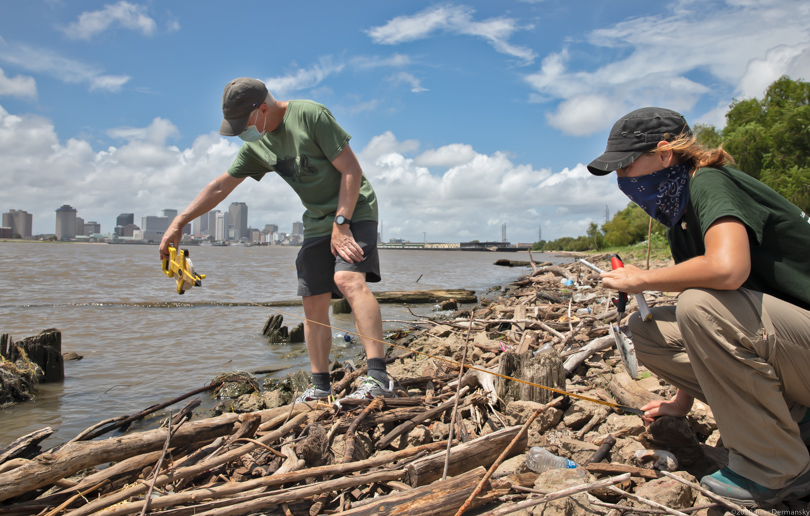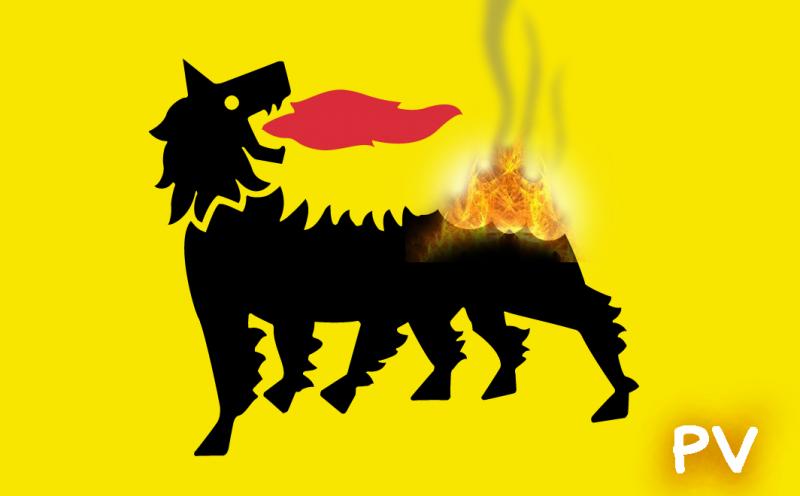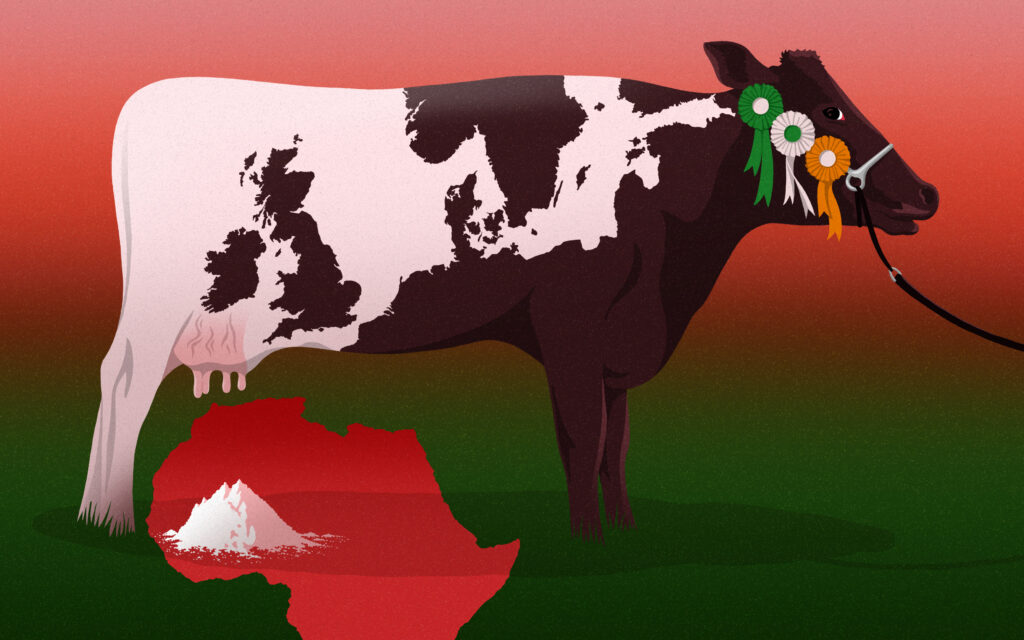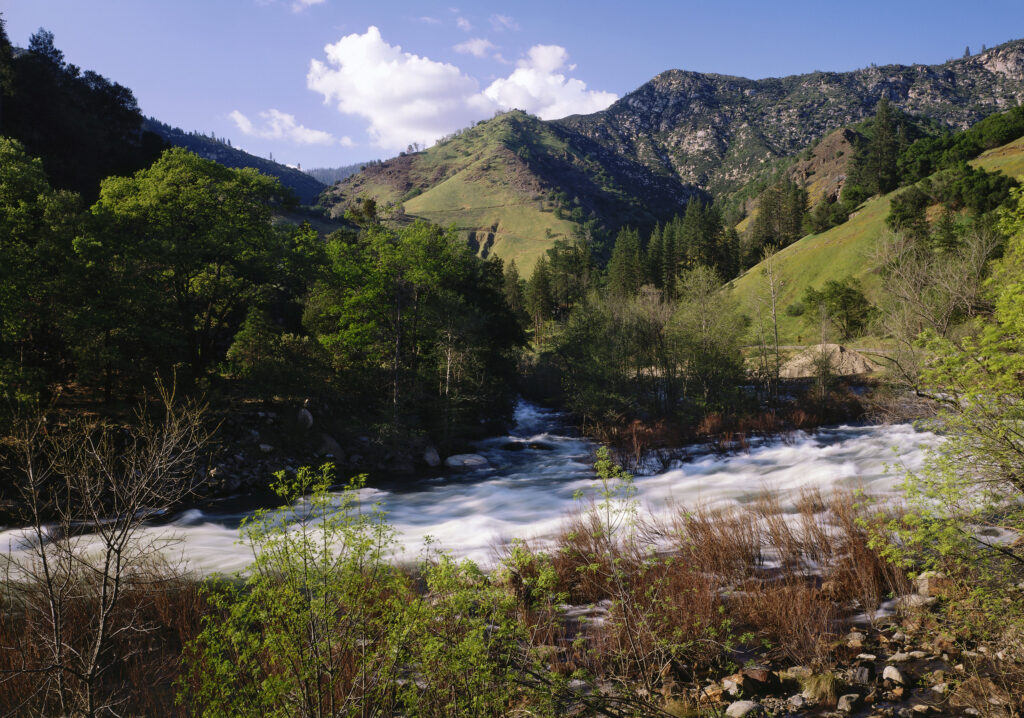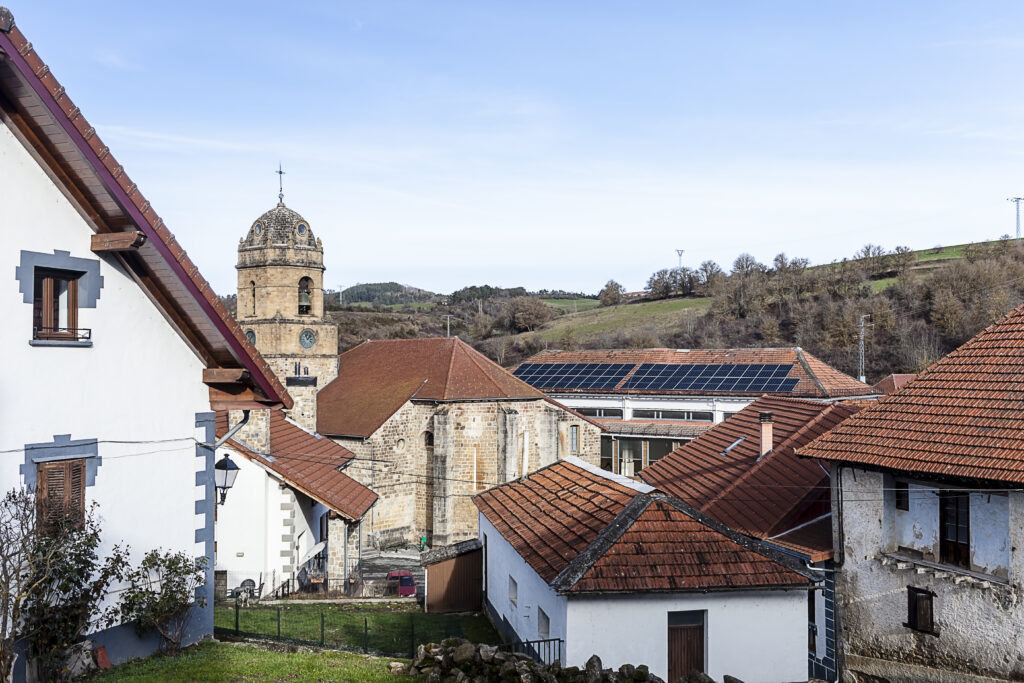Three weeks after a shipping container full of tiny plastic pellets fell into the Mississippi River near New Orleans, cleanup hired by the vessel that lost its cargo stopped shortly after it started as a pair of major storms approached the Gulf Coast. But huge numbers of the pellets, which were made by Dow Chemical and are melted down to manufacture plastic products, still line the river banks in New Orleans and further afield.
After visiting a couple locations along the river banks affected by the spill, Mark Benfield, an oceanographer and plastic pollution expert at Louisiana State University, estimated that nearly 750 million of these lentil-sized plastic pellets, also known as nurdles, could have been lost in the river.
He described the mess as “a nurdle apocalypse.”
The nurdle spill occurred after an incident at the Ports America facility in New Orleans in which four shipping containers were knocked off the container ship CMA CGM Bianca on August 2. Three containers were retrieved, but the fourth, containing 55-pound bags of Dow Chemical polyethylene, fell into the river. It is unclear how many, if any, of the bags of nurdles were recovered.
A bag full of nurdles produced by Dow Chemical that spilled out of a lost shipping container into the Mississippi River. The bag notes: “Do not dump into … any body of water.”
A 55-pound bag of Dow Chemical polyethylene washed up under a wharf in New Orleans’ French Quarter on August August 22.
On August 22, I found one of the Dow bags under a wharf in New Orleans in the French Quarter. Printed on the bag, under information about disposal, reads, in all capital letters: “Do not dump into any sewers, on the ground, or into any body of water.” The bag also cautions, “Powdered material may form explosive dust-air mixture,” and says to keep it away from sparks and flames. The public received no notification following this large spill. Instead, information about the plastic pellet spill came to light when NOLA.com published a story alongside photos by local artist Michael Pajon showing nurdles washing up on the riverbank, almost a week after.
Though the shipping company that lost the container of nurdles had hired a waste management company to start some cleanup on August 22, neither the Louisiana Department of Environmental Quality (LDEQ) nor the Coast Guard has determined who is legally responsible for the incident and subsequent cleanup. “The Coast Guard is still investigating the sequence of events that surrounded the accident at the terminal,” Greg Langley, spokesperson for LDEQ, told DeSmog. He reported that on August 12, a crew from his agency and the Louisiana Department of Fish and Wildlife assessed a portion of the plastic-strewn shoreline by boat
Containment boom left behind when a cleanup crew curtailed their work due to two hurricanes threatening the Gulf Coast.
Accountability for the plastic spill and its cleanup has been slow and hampered by bureaucracy and apparent blind spots in pollution regulations. Once the shipping company’s cleanup finally started on August 22, three full weeks after the spill, it lasted only a day and a half, paused due to the threat of Hurricanes Marco and Laura.
On the morning that work began, I observed a crew cleaning a stretch of the river bank in New Orleans’ French Quarter. They were using leaf blowers to stir up the nurdles, trying to gather the pebble-like plastic resin pellets closer together before scooping them up. In the process, however, some of the nurdles were blown back into the Mississippi River.
Cleanup worker blowing nurdles along the shore of the Mississippi River in New Orleans.
When I asked one of the workers if he realized some of the nurdles were being pushed back into the river and swept away by its current, he shrugged. He told me that they were still figuring out the best way to clean up the nurdles.
That raises an important question: How do you clean up a spill of millions of tiny plastic pellets?
LDEQ’s Langley did not clarify whether the agency has guidelines for cleaning up a nurdle spill. When I asked, he told me, “Regardless of what the product is, we will seek to recover as much product as possible.” He added that the cleanup will likely resume Thursday or Friday, August 27 or 28.
On August 25, three days after the cleanup started, and abruptly stopped, I returned to the same spot where I found the full bag of nurdles, this time with Benfield, the Louisiana State University pollution expert, and Dr. Liz Marchio, a local social scientist. However, we could not find that bag again. The cleanup crew did not appear to have started work under the wharf, but the tide was up and, though the bag is heavy, plastic pellets are buoyant and the bag could easily have floated away, Benfield pointed out.
Plastic pollution specialist Mark Benfield collecting nurdles along the Mississippi River.
Benfield under a wharf in New Orleans surveying the August 2 nurdle spill.
Benfield collected samples of the nurdles and with the help of Marchio took measurements that he will use to estimate how many of the plastic pellets are in an area under the wharf.
Marchio, who has participated in ongoing community cleanups of the spilled nurdles, says she thinks that without media attention on this spill, the State of Louisiana is trying to get by with what she calls a “whoopsie,” due to a lack of policy governing spills like this. “The quantities [of nurdles] are mind-blowing,” Marchio said.
She worried that Hurricane Laura, a powerful Category 4 storm that by now has pummeled the Gulf Coast, will further disperse the pellets.
When Hurricane Laura approached the Gulf Coast on Wednesday, August 26, the Mississippi River changed direction. That change could also spread nurdles upriver from the site of the spill.
Dow Chemical provided me with the full text printed on its bags of polyethylene pellets. Dow spokesperson Rachelle Schikorra said in an email that the company learned of the incident and nurdle release on August 18 and “[i]mmediately…began working closely with the State of Louisiana Department of Environmental Quality and the carrier.”
“Within 48 hours of Dow being notified, recovery of the material began,” Schikorra said, adding that Dow’s contributions included “providing technical expertise on pellet recovery.”
The company says an investigation is now underway to prevent future nurdle releases. “Dow holds both our manufacturing sites and our suppliers to the highest industry standards, and we have begun an investigation with the carrier to prevent future incidents,” Schikorra said.
Neither the U.S. Coast Guard, which leads federal spill responses, nor the LDEQ mentioned Dow’s involvement in the recovery of the nurdles. They also did not reveal that the plastic pellets were produced by Dow.
“Some of the chemical compounds used to make the nurdles could be soluble in the river water,” Wilma Subra, a technical advisor to the advocacy group Louisiana Environmental Action Network, said on a call after reviewing the product contents listed by Dow Chemical. “The polymerized material can be eaten by fish and birds, cause damage to aquatic organisms that can be eaten by other organisms, including humans. Residual chemicals can end up in the water that the water treatment system doesn’t remove.”
Bird footprints next to nurdles under the wharf in New Orleans on August 25.
Nurdles under the wharf on August 25.
Subra is concerned that the plastic pellets could affect the greater New Orleans area because there are drinking water intakes from the river downstream of the spill site. She pointed out that though vinyl chloride isn’t listed on the Dow bag as one of the ingredients in these nurdles, she says such plastic pellets often contain trace amounts of this industrial chemical, mainly used to manufacture PVC, and that even in small amounts, vinyl chloride is a worrisome carcinogen.
Neither the Coast Guard nor LDEQ have quantified how many nurdles were lost. But Benfield estimated that each 55-pound sack contains roughly 753,000 nurdles. A forty-foot long shipping container, like the one that fell into the river, could hold more than 745 million nurdles.
Ducks and nurdles on the Mississippi River bank in New Orleans on August 25.
Mark Benfield, a professor at LSU, with Dr. Liz Marchio, a local scientist surveying the August 2 nurdle spill in New Orleans.
On August 21, a few activists from local environmental groups, including Louisiana Bucket Brigade, gathered on the Mississippi River bank, calling attention to the nurdle spill and the State of Louisiana’s recent green light for a $9.4 billion petrochemical complex located further up river in the town of St. James. During their live-stream, the activists pointed out that the Formosa project would be one of the largest plastic pellet manufacturing facilities in the world, but decried the apparent lack of protocol for handling nurdle spills. Anne Rolfes, the founder of the Louisiana Bucket Brigade who is facing felony charges for leaving boxes of nurdles at the homes of fossil fuel lobbyists, criticized the Coast Guard and LDEQ for the slow and indecisive response to the nurdle spill. Rolfes warned that the Mississippi River will see more plastic spills like this one if the petrochemical industry continues to expand.
According to Quartz, more than 300 new plastic facilities, either proposed or permitted, are in the works in the U.S. Major fossil fuel companies like Royal Dutch Shell see “plastic as one avenue for growth as natural gas prices plummet — and, longer-term, as a way to weather the world’s slow rejection of fossil fuels as an energy source,” Quartz reports, but while the petrochemical industry grows, little research exists to put a number on how many of these tiny plastic spheres make their way into the world’s water, land, and creatures in the process of making all that plastic.
“I am worried about my community,” Jane Patton with the Center for International Environmental Law, a nonprofit environmental law firm, said from the river’s banks on August 21. “I am worried about the drinking water that my city pulls out of the Mississippi River and what it is contaminated with.” She added, “I am worried about the fish my family eats, purchased directly from the hands of a Louisiana man who fishes in Lac Des Allemands — right in the path of Formosa Plastics’ and YCI Methanol’s stormwater runoff. If LDEQ is comfortable letting tiny plastic particles spill unattended into our waterways, what are they letting us feed our children?”
Main image: Mark Benfield (right), a professor at Louisiana State University, with Dr. Liz Marchio, a local scientist, collecting nurdles under a wharf in New Orleans on August 25. Credit: All photos and video by Julie Dermansky for DeSmog
Subscribe to our newsletter
Stay up to date with DeSmog news and alerts


